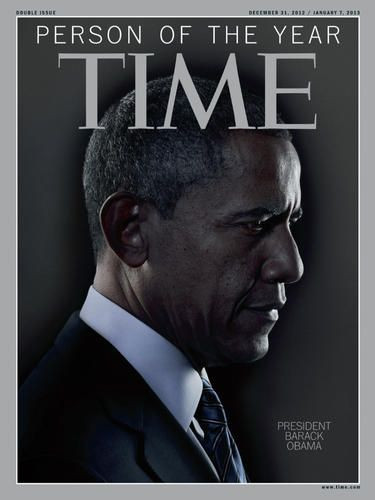Is Time Magazine’s Person Of The Year Still Relevant?

When Time magazine named Charles Lindbergh its first Man of the Year in 1927, superlative journalism was still a fresh concept. The Oscars weren’t born yet. And the notion of “Best Of” still promised to serve an untapped niche.
But at a time when media consumers are inundated with listicles at every turn (a quick look on BuzzFeed’s homepage yielded “10 Faces You Make When You’re Stuck In A Bad Relationship”), it’s fair to question the relevance of Time magazine’s time-honored practice. The idea -- some would use the word conceit -- of choosing a single person to sum up a year’s worth of events seems trite at best. And the staleness of the concept was only underscored on Wednesday morning when the magazine announced that it had chosen President Barack Obama as its Person of the Year for 2012, his second time making the list.
The choice brought its usual share of cheers, jeers and yawns, but not more so than in past years. Ultimately, though, it could hardly be seen as a surprise. Many presidents, including FDR, Reagan, Clinton and even Gorbachev, have made the list twice. Not that Obama isn’t fully deserving of the honor, but couldn’t the magazine that once chose Adolf Hitler as its man of the year shake things up once in a while?
It’s worth pointing out that Time changed the name of its list to the gender-neutral “Person of the Year” in 1999, but it hasn’t chosen a woman since 1986, when it bestowed Philippine President Corazon Aquino with the title. (Women have since shared the spotlight with men in years when multiple people were chosen for the cover.) That glaring omission could have changed this year if Time had gone with the bolder choice of naming either Malala Yousafzai, the teenage Pakistani activist, or Marissa Mayer, the CEO of Yahoo, as its person of the year. Both made the short list of possibilities, and according to Wednesday morning’s announcement on the “Today” show, Yousafzai was a favorite -- a crusader shot in the head by the Taliban simply for speaking out in favor of better girls’ education.
For Time’s part, it’s clear that the Person of the Year is extremely valuable to its brand. It’s the one day out of the year when everyone is talking about Time magazine, a publication whose dedication to habitual general-interest coverage has come to symbolize the folly of the Old Guard. Newsweekly magazines, as evidenced by the imminent demise of Newsweek this year, have been among the media segments hardest hit by the digital migration. Struggling to buck that trend, Time has proved somewhat resilient, posting a 6 percent increase in single-copy sales in 2011, according to the Pew Research Center. But that’s after a 20 percent decline the year before. Overall, its circulation has been flat, which doesn’t offer much wiggle room for risk taking.
And in the end, this month’s nicely designed cover featuring a pensive Obama bathed in bluish grays and browns is likely to offer a nice boost for newsstand sales. Time magazine’s parent company, Time Warner (NYSE: TWX), could use it. Judging from its recent quarterly earnings report, the company’s publishing unit -- which makes up an estimated 12 percent of its total stock price -- suffered an 8.8 percent decline from the same period last year. In an October research note, Marci Ryvicker, a senior analyst at Wells Fargo, wrote that “management will remain focused on cost controls” for the foreseeable future.
That means outside-the-box thinking is probably being put on hold for a while. Time’s brand-defining listicle is here to stay, and it isn’t likely to get more interesting any time soon. In fact, the last time Time’s Person of the Year caused any extended chatter was in 2006, when it heralded the age of user-generated content by giving the honor to “you.” Though controversial at the time, it was a daring choice, complete with a novelty cover that featured a working mirror. But one can only guess how much extra it cost to print.
© Copyright IBTimes 2024. All rights reserved.






















